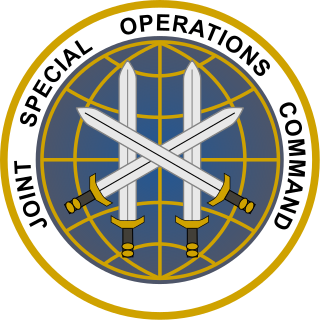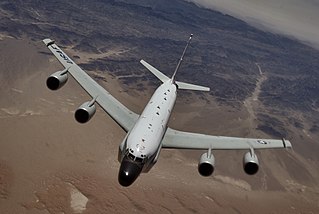GSG 9 der Bundespolizei is the elite tactical unit of the German Federal Police. GSG 9 counterparts on the state level are the Special Deployment Commandos.

General Staff Reconnaissance Unit, or Unit 269, more commonly known as Sayeret Matkal, meaning Sayeret of the Matkal, is the prime sayeret unit of the Israel Defense Forces.

James Lee Dozier is a retired United States Army officer. In December 1981, he was kidnapped by the Italian Red Brigades Marxist terrorist group. He was rescued by NOCS, an Italian special force, with assistance from the Intelligence Support Activity's Operation Winter Harvest, after 42 days of captivity. General Dozier was the deputy Chief of Staff at NATO's Southern European land forces headquarters at Verona, Italy. The Red Brigades, in a statement to the press, stated the reason behind kidnapping an American general was that the US and Italian governments had enjoyed excellent diplomatic relations and that Dozier was an American soldier invited to work in Italy, which justified their abduction. To date, Dozier is the only American flag officer to have been captured by a violent non-state actor.

The Nucleo Operativo Centrale di Sicurezza(NOCS) is the police tactical unit of the Polizia di Stato, one of Italy's national police forces. It operates under the command of the Direzione Centrale della Polizia di Prevenzione.

The Joint Special Operations Command (JSOC) is a component command of the United States Special Operations Command (USSOCOM) and is charged to study special operations requirements and techniques to ensure interoperability and equipment standardization; to plan and conduct special operations exercises and training; to develop joint special operations tactics; and to execute special operations missions worldwide. It was established in 1980 on recommendation of Colonel Charlie Beckwith, in the aftermath of the failure of Operation Eagle Claw. It is located at Pope Field.

The United States Army Intelligence Support Activity (USAISA), frequently shortened to Intelligence Support Activity or Mission Support Activity, and nicknamed The Activity, the Army of Northern Virginia, or Office of Military Support, is a United States Army Special Operations unit originally subordinated to the US Army Intelligence and Security Command (INSCOM) but now part of the Joint Special Operations Command. It is tasked to collect actionable intelligence in advance of missions by other US special operations forces, especially 1st SFOD-D and DEVGRU in counter-terrorist operations.

The Years of Lead is a term used for a period of social and political turmoil in Italy that lasted from the late 1960s until the late 1980s, marked by a wave of both far-right and far-left incidents of political terrorism.
The term Special Mission Unit or Special Missions Unit (SMU) is a term sometimes used, particularly in the United States, to describe some military Special Operations Forces. Special mission units have been involved in high-profile military operations such as the killing of Osama Bin Laden.

Signals intelligence operational platforms are employed by nations to collect signals intelligence, which is intelligence-gathering by interception of signals, whether between people or between machines, or mixtures of the two. As sensitive information is often encrypted, signals intelligence often involves the use of cryptanalysis. However, traffic analysis—the study of who is signalling whom and in what quantity—can often produce valuable information, even when the messages themselves cannot be decrypted.

The Raggruppamento Operativo Speciale (ROS), or Special Operations Group, is part of the Italian Carabinieri. Founded on 3 December 1990 to coordinate investigative activities against organized crime, it is now the main investigative arm of the Carabinieri, dealing with organized crime and terrorism. The ROS reports directly to the Carabinieri General Command.
On April 27, 1981, the Red Brigades kidnapped the 60-year-old Christian Democrat (DC) politician Ciro Cirillo and killed his two-man escort in the garage of his Naples apartment building. At the time Cirillo directed reconstruction efforts in Campania devastated by the earthquake in the Irpinia region on November 23, 1980. He was released after a controversial deal with the Camorra.

The kidnapping of Aldo Moro, also referred in Italy as Moro Case, was a seminal event in Italian political history.

Prospero Gallinari, also known as "Gallo", was an Italian terrorist, a member of the Red Brigades (BR) in the 1970s and 1980s.

On 11 January 2013, the French military attempted a rescue operation in Bulo Marer, Lower Shabelle, Somalia to free French hostage Denis Allex from al-Shabaab. The operation failed: Allex was executed during the raid and two French commandos and at least eight civilians were killed in a firefight.

The Red Brigades was a far-left terrorist organization and guerilla based in Italy, responsible for numerous violent incidents, including assassinations, such as the murder of former Prime Minister Aldo Moro. The Red Brigades were also involved in kidnappings and robberies during the so-called "Years of Lead".
The 2014 rescue mission in Syria was an American led effort to locate and rescue hostages being held by ISIS forces. Plans to rescue the hostages were accelerated after the execution of journalist James Foley, Steven Sotloff, and Kayla Mueller by ISIS militants. A total of 14 hostages were held hostage by the IS at an undisclosed location. Though no soldiers were killed, the mission failed to locate and rescue the hostages.

The 2014 hostage rescue operations in Yemen were missions to rescue hostages held by Al-Qaeda in the Arabian Peninsula (AQAP) in Yemen. The first attempt on 26 November 2014 rescued 8 hostages, but five hostages, including the American journalist Luke Somers, were moved by AQAP to another location prior to the raid. The second attempt by U.S. Navy SEALs once again attempted to rescue the hostages, but Luke Somers and South African teacher Pierre Korkie were killed by AQAP during the raid in Shabwah Governorate of Yemen. Although the majority of hostages had been rescued, the operation was still seen as a failure in the West. The media particularly criticised the incapability of American forces to rescue Somers.
The 69 Commando ; also known as Very Able Troopers 69 is an elite multi-tasking special forces unit of the Royal Malaysian Police. The VAT 69 is based at Ulu Kinta, Perak and together with Special Actions Unit, they are part of Pasukan Gerakan Khas [PGK; ]. The mission of 69 Commando is to conduct high-risk tasks such as counter-terrorism, hostage rescue, intelligence gathering and counter-insurgency within the borders of Malaysia.

The Special Actions Unit, commonly known as UTK, is a tactical unit (commando) of the Royal Malaysia Police (RMP). The unit is based at the RMP Bukit Aman headquarters, Kuala Lumpur and, together with 69 Commando Battalion, they are part of Pasukan Gerakan Khas.













